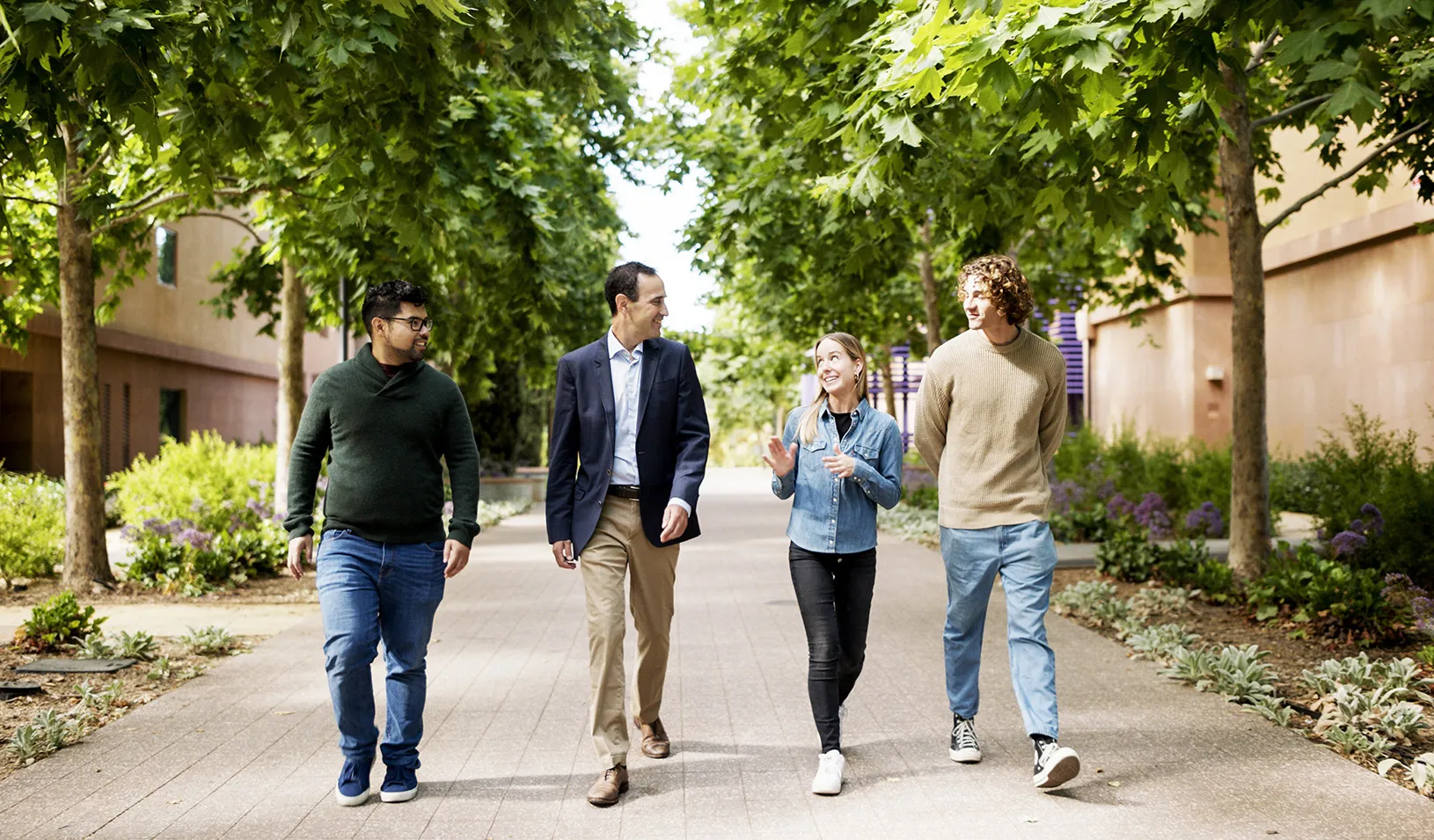Women’s Circles Go Virtual
Stanford GSB’s fastest-growing alumni program moves online, giving alumnae everywhere the chance to connect, reflect, support, and inspire.
September 09, 2020
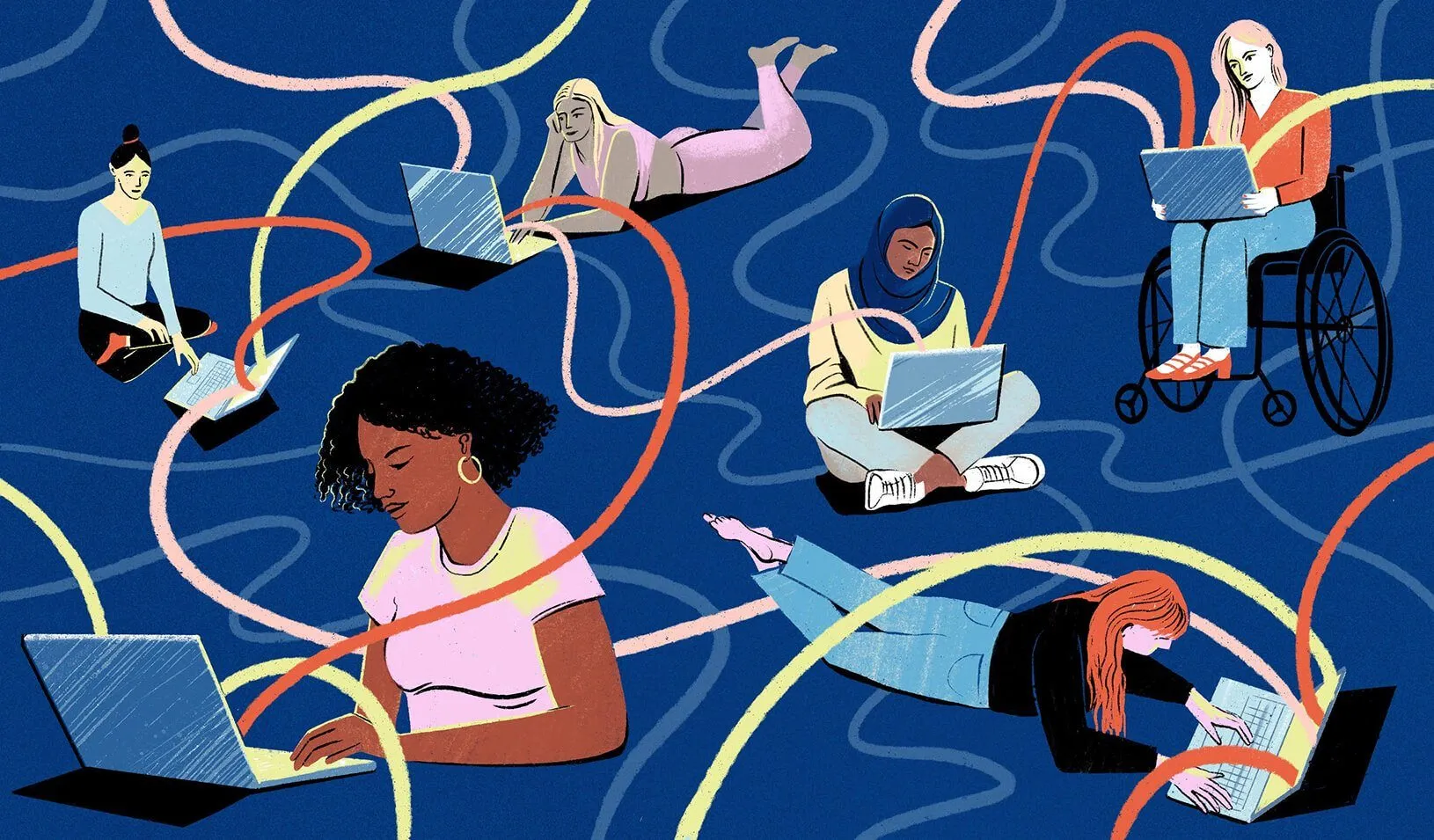
Some Women’s Circles are now meeting more frequently — every two weeks — to support each other and manage the stress of the pandemic. | Illustration by Eleanor Taylor
Menna Samaha, MBA ’13, is no stranger to personal and professional transitions, but none impacted her like the birth of her first child. She found her sudden new identity as a parent more demanding and overwhelming than she’d ever anticipated.
“I had complications with my pregnancy, and my perception of becoming a mother was wildly different than my experience,” she says. “I struggled with the transition in a way that I didn’t expect.”
Samaha found much-needed support within Stanford GSB Women’s Circles, a fast-growing network of small groups of alumnae who meet monthly to deeply connect, and to support and inspire each other through life’s ups and downs.
“Circles are intended to provide a community where women feel comfortable being vulnerable and sharing their full selves, whatever that is to them,” says Samaha, senior vice president of strategy at Madison Avenue Partners LP, a New York-based investment firm. “You have a space where everything is held in confidence and where you’re surrounded by women who have had a shared experience — we’ve all attended the GSB. But our experiences may be drastically different, with a diversity of perspective and insight. To me, Women’s Circles has been crucial during various transitions.”
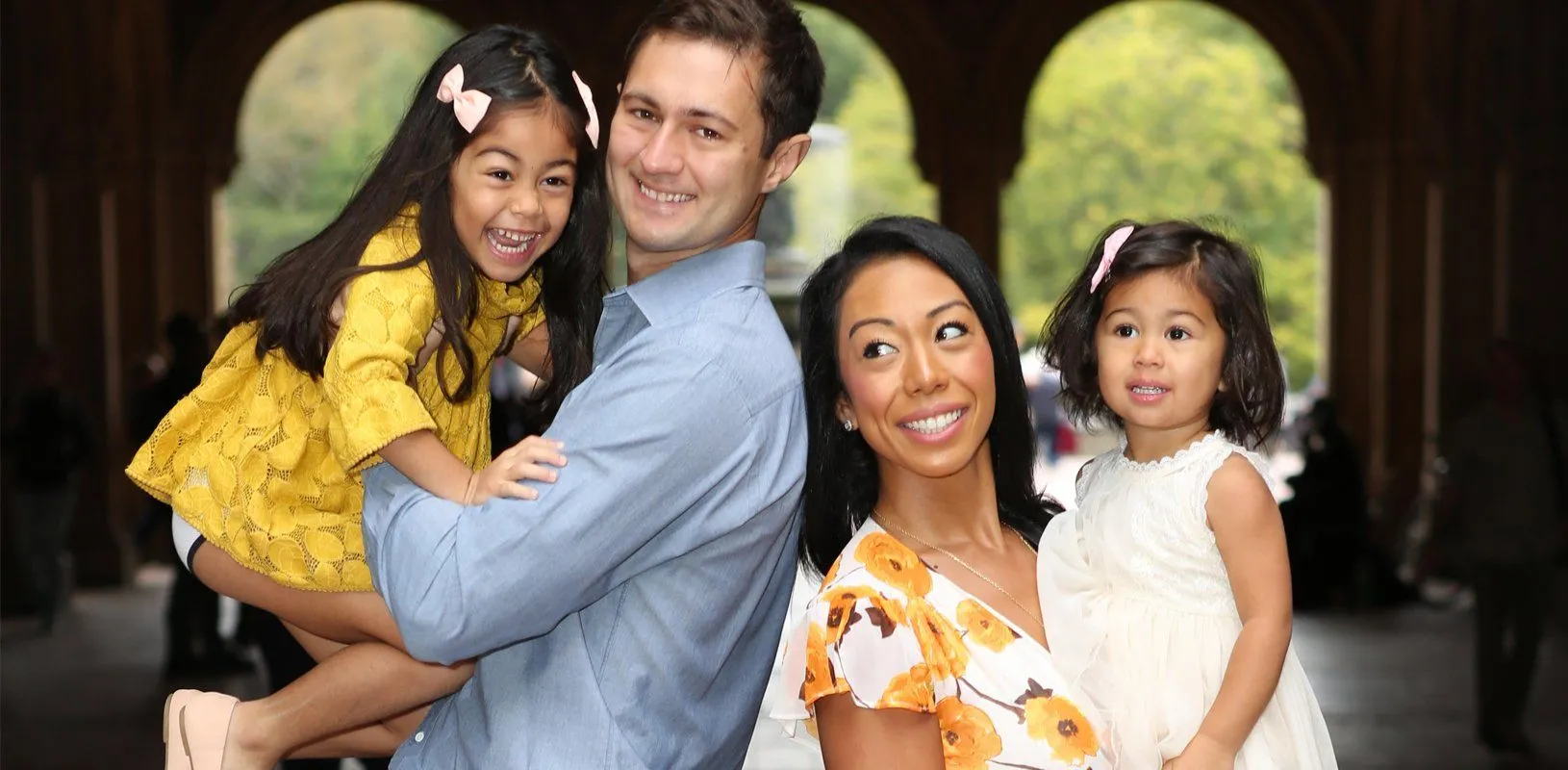
Menna Samaha, MBA ’13 with her family.| Courtesy of Menna Samaha.
Launched in New York in 2013 by Michelle Clayman, MBA ’79, and K. Danae Pauli, MBA ’12, Women’s Circles now includes more than 120 groups (circles) of six to 10 women each who meet monthly in 18 regions around the country and internationally. Nineteen percent of Stanford GSB alumnae — nearly 900 women — have participated in Women’s Circles, now the school’s fastest-growing alumni program.
Opening the Spigot
Until recently, most Women’s Circles met in person at a member’s home, but with COVID-19 making that impossible, the program is now expanding our virtual region, giving alumnae around the world the opportunity to join virtual-only groups that provide the same long-term personal and professional support.
“In the past, if you were a Stanford GSB alumna, you were able to join an in-person circle in one of our 17 regions, and virtual-only circles in the U.S. were just emerging as an alternative,” says Stephanie Mishra, associate director for Women’s Programs at Stanford GSB. “Now the spigot has been turned on — you can join a virtual-only circle anywhere in this world. I’ve been incredibly moved over the last few weeks by the number of emails I’ve received from women who are so grateful and so excited for the opportunity to finally be able to be part of a virtual-only circle. They’re writing from Thailand, Australia, New Zealand, and on and on. It’s been wonderful.”
New circles are established yearly, with each curated to include members from the same general geographic area who are diverse in age, experience, and background. A surge of approximately 320 women have signed up to learn more about Women’s Circles so far this year in advance of the program’s fall membership drive, Mishra says.
In Singapore, where Liz Ortiguera, SEP ’16, launched Asia’s first two Women’s Circles earlier this year, the program has shown its agility in the face of COVID-19. Members began meeting in person in January, transitioned to virtual meetings due to COVID-19 shortly thereafter, and are now meeting in person again more frequently — every two weeks — to support each other and manage the stress of the pandemic. They’re joined virtually by a member who recently relocated to the U.S. but is determined to maintain ties with her Singapore-based circle.
“It’s amazing; despite the fact that she’s halfway around the world, she regularly Zooms in,” Ortiguera says. “We’re strong enough together that she feels she can stay bonded to us remotely from New York. We just cheer that every time.”
Supportive Spaces
Whether in person or virtual, Women’s Circles offer alumnae a unique and essential resource, says Samaha, who helped launch the group’s first Regional Leadership Board in New York City and is a founding director of the group’s Global Management Board, where she chaired the partnerships committee. Samaha found herself in need of support following the birth of her first child. Accustomed to perceiving herself as a professionally driven woman of color, she was unexpectedly shaken by her new role as a parent.
“Becoming a mother shifted my identity in a profound way,” she says. “I’d been so used to having control over almost every aspect of my life, and this really threw me off-center. The group helped me unpack it all. They helped me see that I had this incredible source of wisdom and that I was creative, resourceful, and whole. That the decisions were within me. And that’s really powerful.”
A “Personal Board of Directors”
Circles are not networking groups. Each is led by two alumnae volunteer co-leaders who use carefully curated agendas to create an engaging experience. Members are asked to commit for a minimum of one year. Topics are varied, ranging from health, finances, and career advancement to family dynamics, living in the time of COVID-19, and work/life balance. A constant, however, is one of the hallmarks of Women’s Circles — its focus on intergenerational members who can learn from each other.
“For me, I feel supported by this incredible personal board of directors whose wisdom begins with an alumna from the ’60s, who graduated as one of three women in her class, to women whose experience touches every decade since,” Samaha says. “That wealth of knowledge is invaluable. It provides me with a variety of inspiring models: people who are older than me, people who choose to stay home, and people who make other choices. The intergenerational aspect is so valuable in allowing me to feel like I’m well-educated in any decision I make.”
Tackling the Tough Stuff

Nicole Chang, JD/MBA ’95.| Matt Beard
The depth of those connections and the discussion exercises developed by circles facilitators help members tackle some of life’s most difficult challenges. Nicole Chang, JD/MBA ’95, says her circle has helped her navigate ill parents, emotional teenagers, and the unexpected suicide of a friend — a Stanford GSB roommate and the mother of five children.
“My emotions were so very many; some guilt that I hadn’t recognized the extent of her despair, my own grief, and grief for what I imagined her family was going through,” Chang says. “Previous to circles and its monthly discussions, which compelled me to learn to share complex emotional issues, I don’t think I would have even talked about this to such an extent with others, as it was so devastating.”
Chang, who’s served as CEO, CFO, and director for a range of international retail, media, finance, and tech companies, helped establish the program’s fourth region, in Los Angeles, in 2015. There, she co-leads one circle, is active in a second, and previously oversaw the marketing strategy for the program’s Global Management Board.
Circles members also guide each other through a range of professional hurdles.
“We all have had downright awful moments in our professional lives,” Chang says. “I had one issue where I wrote up a subordinate, and they retaliated, and I had to deal with a lot of bureaucracy. After sharing the situation and listening to different interpretations, any doubt that had crept into my mind about being unjust were squelched, which made me feel a lot more confident in my decision to stand my ground and back up my actions.”
For Chang, the strength of Women’s Circles lies in the deep connections that allow members not only to support each other but to speak “inconvenient truths” that reflect reality and diverse perspectives.
“When we share our vulnerability, we find out we’re not alone in issues like job dissatisfaction or issues with spouses or kids,” Chang says. “Sometimes I think, ‘If these brilliant, hard-working women from Stanford GSB can’t always get it right, how can I?’ But then I look around and see all these alumnae and the amazing things they’ve achieved and think to myself, ‘If anyone can do this, I can, because I’m surrounded and supported by these incredible people.’”
— Beth Jensen
For media inquiries, visit the Newsroom.
Explore More
Erin Nixon Joins Stanford GSB as Assistant Dean of Admissions
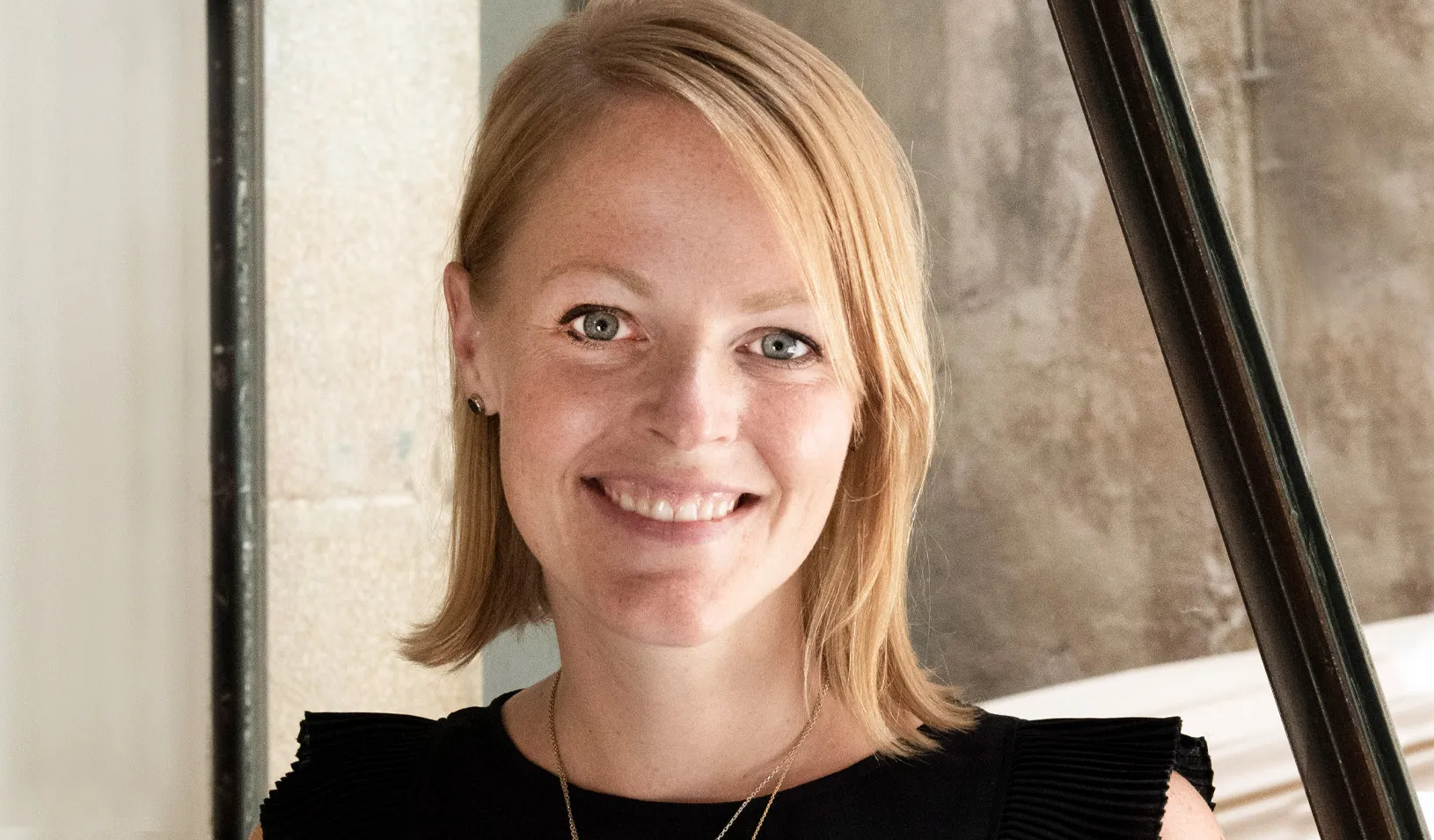
Nia Rose Froome, MBA ’23: Making Local, Fresh Food Available for All
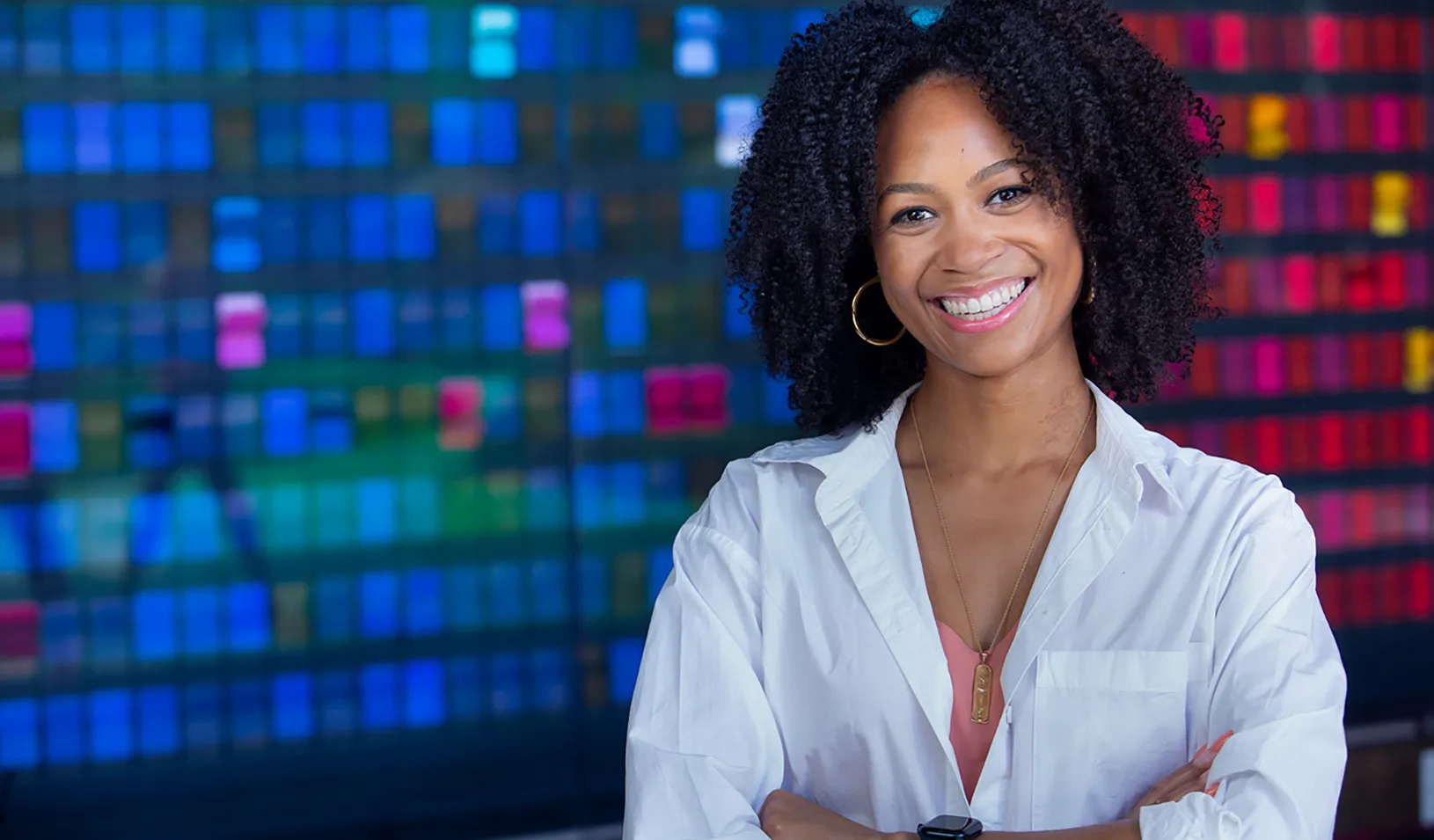
New Research Fund Promotes Responsible Leadership for the Next Century
